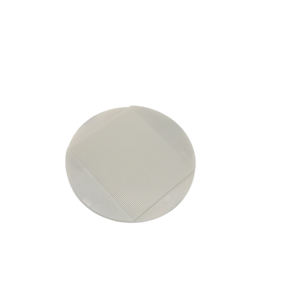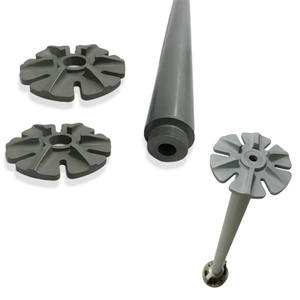Professional industry ceramic supplier, silicon nitride, silicon carbide, aluminum nitride and any other kinds of ceramics.
PRODUCT PARAMETERS
Description
Overview of Aluminum Nitride Aln Macor Al2O3 Dbc Dpc Amb Metallized Ceramic Substrate with Copper Coating
Aluminum Nitride Aln Macor Al2O3 Dbc Dpc Amb Metallized Ceramic Substrate with Copper Coating is an advanced technical ceramic renowned for its exceptional thermal conductivity and reliable electrical insulation. It is a key material in high-power electronics, LED lighting, and semiconductor processing, effectively managing heat in demanding applications where performance and reliability are critical.
Features of Aluminum Nitride Aln Macor Al2O3 Dbc Dpc Amb Metallized Ceramic Substrate with Copper Coating
- High Thermal Conductivity: Offers excellent heat dissipation, comparable to beryllia (BeO).
- Electrical Insulation: Maintains high electrical resistivity even at elevated temperatures.
- Low Thermal Expansion: Matches the coefficient of thermal expansion of silicon, ideal for semiconductor substrates.
- Excellent Mechanical Strength: Possesses good mechanical properties for structural integrity.
- High-Temperature Stability: Performs reliably in harsh environments and at high temperatures.
- Non-Toxic: A safe alternative to beryllium oxide (BeO) ceramics.
Specification of Aluminum Nitride Aln Macor Al2O3 Dbc Dpc Amb Metallized Ceramic Substrate with Copper Coating
Aluminum Nitride ceramic substratums offer excellent thermal conductivity. This material relocates heat efficiently. Copper coatings boost this performance further. Straight Bound Copper or DBC connects thick copper layers. Turned On Metal Bonding or AMB offers also more powerful bond. These methods handle high power thickness well. Aluminum Nitride fits demanding power electronic devices.
Macor is a machinable glass ceramic. You can machine it to exact shapes quickly. Its thermal conductivity is less than Light weight aluminum Nitride. Its toughness is excellent. Copper finishings can be used making use of Direct Plated Copper or DPC. This provides Macor electric function. Macor is perfect for intricate forms requiring custom-made measurements.
Alumina or Al2O3 ceramic is extensively utilized. It gives solid electric insulation. Its mechanical stamina is trustworthy. Alumina costs much less than Aluminum Nitride. Copper coatings like DBC or DPC prevail. DBC bonds thick copper aluminum foil. DPC plates a thinner, extremely specific copper layer directly. Alumina helps numerous motherboard and power modules.
The copper layer is crucial. It carries out electrical energy and warmth successfully. Copper density varies. DBC and AMB commonly utilize 100 to 600 micrometers. DPC utilizes thinner layers, frequently 10 to 100 micrometers. This copper layer creates the circuit pattern. This pattern brings electrical signals. It also moves heat far from parts.
These ceramic substratums manage warmth in electronic devices. They stop getting too hot. They use stable platforms for circuits. Various porcelains offer various requirements. Aluminum Nitride handles one of the most heat. Alumina offers a tested, cost-effective remedy. Macor allows distinct, complicated layouts. The copper layer is constantly essential. It allows electric links and warmth dispersing. Pick the appropriate ceramic and copper process for your application’s thermal and electrical needs.
Applications of Aluminum Nitride Aln Macor Al2O3 Dbc Dpc Amb Metallized Ceramic Substrate with Copper Coating
Aluminum Nitride (AlN), Macor, Alumina (Al2O3) ceramic substratums with copper finishings are necessary in electronics. They manage heat and electrical energy well. These substrates utilize unique approaches to bond copper. DBC (Direct Bonded Copper) thaws copper onto ceramic. DPC (Direct Plated Copper) develops copper layers with plating. AMB (Active Metal Brazing) uses a braze alloy to join them. These approaches produce strong, trustworthy connections.
Aluminum Nitride is superb for moving heat. Its thermal conductivity is extremely high. This makes AlN best for high-power devices. Power modules in electrical cars and trucks need AlN. So do high-brightness LED lights. Base stations for interaction use AlN substratums. They stop things from obtaining as well warm.
Alumina (Al2O3) is widely used. It offers great electric insulation. It handles warm rather well. Alumina is affordable. You discover it in numerous circuit card. Consumer electronics utilize alumina substrates. Automotive electronic devices use them as well. Industrial control systems depend on them. They offer a strong base for circuits.
Macor is various. It’s machinable ceramic. You can shape it exactly with routine tools. Macor functions well in vacuum environments. It handles high voltages. Scientific tools make use of Macor components. Aerospace applications require its security. It holds sensors safely. It insulates high-voltage elements.
Copper is vital. The thick copper layer relocates warmth quickly. It also brings high electric currents. The copper surface area allows you solder parts straight. This develops solid electric connections. The ceramic beneath insulates everything appropriately. This mix is dependable. It lasts a long time.
These products address difficult problems. Power electronic devices generate intense warmth. AlN DBC substratums pull that heat away. AMB produces very solid bonds for rough conditions. High-frequency circuits require stable systems. Alumina DPC gives a smooth surface area. Accuracy alignment requires custom-made forms. Macor can be machined to specific sizes. Metallized ceramics link circuits to warm sinks successfully. This maintains electronic devices running awesome and stable.
Company Profile
Tanki New Materials Co.Ltd. focus on the research and development, production and sales of ceramic products, serving the electronics, ceramics, chemical and other industries. Since its establishment in 2015, the company has been committed to providing customers with the best products and services, and has become a leader in the industry through continuous technological innovation and strict quality management.
Our products includes but not limited to Aerogel, Aluminum Nitride, Aluminum Oxide, Boron Carbide, Boron Nitride, Ceramic Crucible, Ceramic Fiber, Quartz Product, Refractory Material, Silicon Carbide, Silicon Nitride, ect. please feel free to contact us.

Payment Methods
T/T, Western Union, Paypal, Credit Card etc.
Shipment Methods
By air, by sea, by express, as customers request.
5 FAQs of Aluminum Nitride Aln Macor Al2O3 Dbc Dpc Amb Metallized Ceramic Substrate with Copper Coating
People often ask what Aluminum Nitride, Macor, and Alumina ceramics offer. Aluminum Nitride handles heat best. Alumina costs less. Macor machines easily like metal. Choose AlN for high heat parts. Pick Alumina for budget needs. Use Macor for custom shapes.
Many wonder why copper coating matters. Copper bonds directly to the ceramic. This creates electrical paths. It moves heat fast. Copper lets you solder parts directly. This makes strong electronics assemblies.
People question the differences between DBC, DPC, and AMB. DBC bonds thick copper sheets to ceramic. DPC plates thin copper layers onto it. AMB fuses copper to ceramic under vacuum. DBC handles big power. DPC suits fine circuits. AMB offers top strength and heat flow.
Customers ask about heat performance. AlN moves heat best. Alumina moves heat well enough for many uses. Copper on top pulls heat away fast. This keeps chips cool. Good heat flow stops device failure.
Users want surface prep advice. Clean surfaces are vital. Remove all grease and dirt. Use gentle cleaners. Avoid scratches. Smooth surfaces mean better copper sticking. This prevents lifting or cracks later. Proper cleaning ensures reliability.
REQUEST A QUOTE
RELATED PRODUCTS
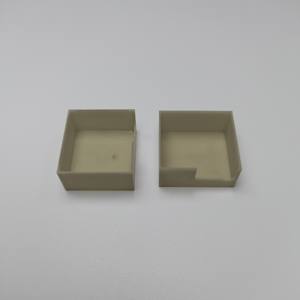
Aluminium Nitride Powder Chemical Salts Nitride Salts CAS 24304-00-5 White Powder Aluminum Nitride
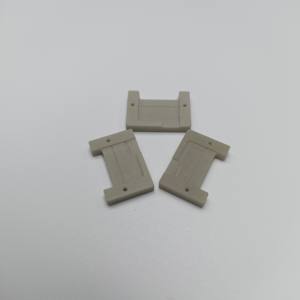
Customized High Quality Corrosion Resistance Thermal Conductivity Ain Aluminum Nitride Ceramics
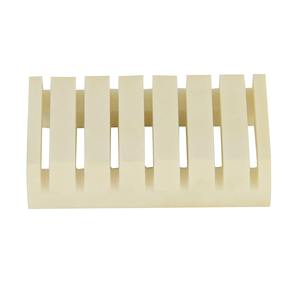
Electrical Aluminum Nitride Aln Heat Sink for Power Module
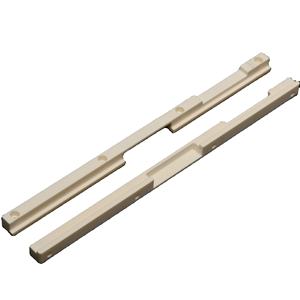
5mm Diameter Conductivity Aluminum Nitride Ceramic Ball
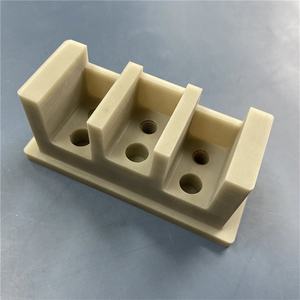
99% Customized High Thermal Conductivity and Low Thermal Expansion Application of Ain Aluminum Nitride Ceramics Instruments
